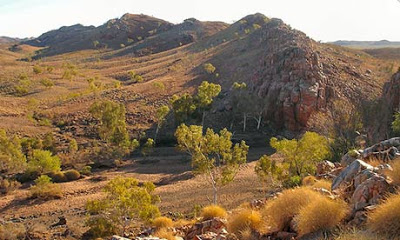
Evidence of what could be the earliest forms of life on Earth has been unearthed in the remote Pilbara region of Western Australia.
Researchers from Australia and the US have discovered signs of “complex microbial ecosystems” within rock sediments dated at 3.5bn years old.
The microbes were found in a body of rock called the Dresser Formation, west of Marble Bar in WA.
Professor David Wacey, researcher at the University of Western Australia, told Guardian Australia the discovery “pushes back evidence of life on Earth by a few more million years”.
“The Pilbara has some of the best, least deformed rocks on Earth; there aren’t many rocks older than there,” he said. “I would say this is the most robust evidence of the oldest life on Earth. My team has found evidence dated at 3.45bn years in the past, so we have gone further back by a few million years.”
Wacey said slivers of rock were analysed by the team, which found evidence of groups of microbes within the sediment.
“Microbes and bacteria like to live in communities. Think about the bacteria in your stomach, for example,” he said. “These microbes lived in layers that required different chemical gradients to survive. So bacteria that liked light would be towards the top while those that didn’t were towards the bottom.”
Earth was a far different place 3.5bn years ago, with temperatures and sea levels much higher than today. Bacterial communities, such as that found in the Pilbara, were the most advanced form of life for several billion years before more complex life forms began to develop.
“Bacteria ruled the world back then, it would’ve been a very smelly world indeed,” said Wacey. “It would’ve been pretty hostile for us. There was essentially no oxygen, a lot of CO2 and methane and much warmer oceans.
“Most of the world was covered by water, with just a bit of land sticking out here and there. There was a lot of volcanic activity and plenty of sulphur in the air. Until 2.5bn years ago, there was only the start of the evolution that would see cells with nucleoli, then evolving to multi-cell organisms such as animals and us.”
Wacey said that the search for slightly older organisms would go on, potentially in ancient rock formations in South Africa and Greenland, but the Pilbara discovery could have further ramifications in the quest to learn more about the solar system.
“These kinds of ecosystems could be viewed by a rover, such as the one that visited Mars,” Wacey said. “We wouldn’t know the age, of course, as we couldn’t date them. But we would know that there was life at some point on another planet, which would be pretty exciting.”
Note : The above story is based on materials provided by Oliver Milman for the guardian










